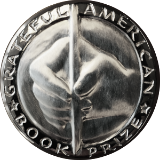May 16 — May 31, 2022
History Matters
Showing our children that their past is prelude to their future
Linda Brown, an African American child from an interracial area of Topeka, KS, fired up one of the most crucial legal decisions in history. According to her, “We lived in a mixed neighborhood, but when school time came, I would have to take the school bus and go clear across town, and the white children I played with would go to this other school.”
Brown’s father appealed to the NAACP [The National Association for the Advancement of Colored People] and presented their case – Brown v. Board of Education of Topeka – to the Supreme Court.
On May 17, 1954, the Court ruled that separation of the races was illegal. Up until then, black, and white citizens lived under a policy known as “separate but equal,” which legitimized segregation rather than condemning it. As History.com described it: “In an opinion written by Chief Justice Earl Warren … not only was the ‘separate but equal’ doctrine unconstitutional in Linda’s case, it was unconstitutional in all cases because educational segregation stamped an inherent badge of inferiority on African American students. A year later, after hearing arguments on the implementation of their ruling, the Supreme Court published guidelines requiring public school systems to integrate ‘with all deliberate speed’.”
For more information, the Grateful American Book Prize recommends School Integration: Brown V. Board of Education of Topeka by Rebecca T. Klein.

In the early 1800s handfuls of adventurous citizens started making their way west. In 1841 70 pioneers left Independence, MO for the Oregon Territory: 100 departed the following year. By May of 1843, the exodus was in earnest when 1,000 men, women and children boarded 100 wagons from Elm Grove, MO, and embarked on their westward journey with a herd of 5,000 oxen and cattle.
According to History.com, “The migration of 1844 was smaller than that of the previous season, but in 1845 it jumped to nearly 3,000. Thereafter, the migration on the Oregon Trail was an annual event, although the practice of traveling in giant convoys of wagons gave way to many smaller bands of one or two-dozen wagons. The trail was heavily traveled until 1884–the Union Pacific constructed a railway along the route.”
For more information, The Grateful American Book Prize recommends A Sudden Country by Karen Fisher.

The nation remembers the soldiers, sailors and airmen who perished in all its armed conflicts. The first known vigil honoring its heroes was in an Arlington National Cemetery gathering on May 30, 1868.
In the beginning, Memorial Day was known as Decoration Day. It “was inspired by local observances that had taken place in various locations in the three years since the end of the Civil War,” says History.com.
There are still those who might prefer to call it Decoration Day, but Memorial Day was declared a national holiday by a 1971 act of Congress.
Now, people are prone to associate the celebration with the opening of summer. That is nothing new. According to an Opinion article published by the Tribune News Service, West Point graduate Meaghan Mobbs wrote that “People have a ‘tendency … to forget the purpose of Memorial Day and make it a day for games, races, and revelry, instead of a day of memory and tears … No, this is not a recent tweet or a pithy social media caption. It was uttered by a veteran in 1913, who felt the meaningfulness of Memorial Day was slipping through the American conscience.”
In her OpEd, Ms. Mobbs reminds her readers that Congress established a National Moment of Remembrance that was to be observed every Memorial Day at 3 p.m. local time.
The Grateful American Book Prize Helmet for My Pillow: From Parris Island to the Pacific by Robert Leckie.

History Matters is a biweekly feature courtesy of The Grateful American Book Prize.




